 |
| Gas Welding |
In this post, you will learn what gas welding is and how it is done? Its working principle, equipment, applications, and types of gas welding.
Gas Welding
Gas welding is accomplished by melting the edges or surfaces and mixing with a gas flame and allowing the molten metal to flow together, thus forming a solid continuous joint when cooled.
This process is particularly suitable for joining metal sheets and plates with thicknesses of 20 to 50 mm. The filler material of more than 15 mm thick is added to the weld as a welding rod.
Several gas combinations can be used to produce a hot flame for welding metals. Common mixtures of gases are oxygen and acetylene, oxygen and hydrogen, oxygen and other fuel gases, and air and acetylene.
Oxygen-acetylene mixtures are used in much larger quantities than others and occupy a prominent position in the welding industry. The temperature of the oxy-acetylene flame in its hottest region is about 3200 ° C, while the temperature obtained in the oxy-hydrogen flame is about 1900.
Gas welding flames
An accurate arrangement of the flame is necessary for reliable functions. When the torch is supplied approximately equal amounts of oxygen and acetylene, a neutral flame is produced at a maximum of 3200 ° C.
There are 3 types of gas welding flames
1. neutral flame.
2. Carburizing flame.
3. oxidation flame.
1. Neutral Flame
A neutral flame is named neutral flame since in most cases will have no chemicals on the metal being welded neutrals. This neutral flame is desired for most welding operations, but in some cases, a slightly oxidizing flame, with an excess of oxygen, or a slightly carbonating flame, with an excess of acetylene. The position of a flame is easily determined by its presence.
A neutral flame has two definite zones.
👉 A sharp brilliant cone extends a short distance from the tip of the touch, and
👉 An outer cone or envelope is only faintly bright and blue. The first develops heat and the second protects the molten metal from oxidation because the heat of the gas consumes oxygen in the surrounding environment. A neutral flame is widely used for welding steel, cast iron, stainless steel, aluminum, copper, etc.
2. Carburizing Flames
The carburizing flames will be producing iron carbides, causing chemical changes in the steel and iron. For this reason, a carburizing flame is not used on the metals that absorbed carbon.
Carburizing flame has three zones
A carburizing flame is one in which there is an excess of acetylene; This flame has three zones:
👉 Sharply defined internal cones,
👉 An intermediate cone of white color, and
👉 Blue colored outer cone. The intermediate cone length is indicative of the ratio of excess acetylene in the flame.
When welding, it tries to give the steel a weld higher carbon content than the parent metal, resulting in a hard and brittle weld.
3. Oxidation Flame
Oxidizing flames are hotter than neutral flames and are often used on the copper and zink The oxidation flames have two zones.
An oxidizing flames in which there is an excess of oxygen.
Oxidation flame has two zones
👉 Small internal cone with a purplish tinge.
👉 Outer cone or envelope. In the case of an oxidizing flame, the inner cone is not sharply defined as a neutral or carburizing flame. This flame welding is required for brass. In steel, this will result in a larger grain size, reduced brittleness with increased strength and elongation.
Types of gas welding
There are 5 different types of gas welding:
1. Oxy-acetylene gas welding.
2. Oxy-gasoline gas welding.
3. MAPP Gas Welding.
4. Butane or propane welding.
5. Hydrogen gas welding.
Quick links for more Inquiry
1. Oxy-acetylene welding
In this type of welding, oxy-acetylene welding applies a mixture of acetylene gas and oxygen gas to supply welding torches. Oxy-acetylene welding is the most commonly used gas welding type. This gas mixture provides the highest flame temperature of the available fuel gases.
Although the acetylene gas is generally the most expensive of all fuel gases. Acetylene gas is a volatile gas and requires specifics handling and storage procedures.
2. Oxy-Gasoline Welding
Pressurized gas is used as welding fuel where construction costs are an issue, especially in places where acetylene canisters are not available. Gasoline torches may be more useful than acetylene for thick steel plates cutting the torch.
Gasoline can be pumped by hand from a pressure cylinder, which is a common practice by jewelry manufacturers in poor areas.
3. MAPP Gas Welding
It has a gas welding system for welding methylacetylene-propidine-petroleum gas. (MAPP) is a gas mixture that is much more inert than other gas mixtures, making it safe for beginner and recreational welders to use and store.
MAPP can also be used at extremely high pressures, it is used in high-volume cutting operations.
4. Butane or Propane Welding
These are similar gases that can be combined separately or together as fuel gases. Butane and propane have lower flame temperatures than acetylene but are less expensive and easier to transport.
Propane flashlight is used more often for soldering, bending, and heating. Propane requires a different type of flashlight tip than the injector tip because it is a heavy gas.
5. Hydrogen Welding
Hydrogen can be used at higher pressures than other fuel gases, making it particularly useful for underwater welding processes.
Some hydrogen welding equipment performs electrolysis by splitting the water used in the welding process into hydrogen and oxygen. Such electrolysis is often used for small torches, they are used in the ornament making process.
Gas welding parts
Following are the main parts of gas welding:
👉 Cylinder
👉 Cylinder valve
👉 pressure regulator
👉 Flashback arrestor
👉 Flexible holes
👉 non-return valve
👉 Blowpipe
All oxy/fuel gas processes operate in the same way. A fuel gas such as propane or acetylene is mixed with oxygen in a torch or blowpipe to be hot enough for this heat.
A fuel gas such as propane or acetylene is mixed with oxygen in a flame (often called 'ch torch') to produce a flame that is hot enough for this purpose.
The main components of oxy/fuel gas equipment are:
👉 The cylinder of oxygen and fuel gas (propane or acetylene).
👉 A means of shutting down or separating a gas supply, usually a cylinder valve.
👉 Pressure regulator mounted on the outlet valve of a gas cylinder used to reduce gas pressure and control gas pressure.
👉 A flashback arrestor to protect the cylinder from the flashback and backfire.
👉 Flexible hoses for transporting gases from cylinders to bleed pipes.
👉 Non-return valves to stop the flow of oxygen line into the flow line and flow to the oxygen line.
👉 A blowpipe or other burner device where fuel gas is mixed with oxygen and ignited.
Gas Welding Equipment
The following are the tools used in gas welding:
👉 Cylinder
👉 Connecting torch
👉 Welding hand-screen or helmet
👉 protective gloves
👉 Welding goggles
1. cylinder
In gas welding, the cylinder is used to store the amount of oxygen and acetylene and is usually made of steel. The cylinder should always be secured and used in an upright position. The valve cap should always be in place when the cylinder is not being used.
2. Welding Torch
The welding torch has a mixer chamber and control values. At the other end of the torch is a nozzle where the fuel-oxygen mixture ignites simultaneously.
3. Welding hand-screen or helmet
Welding hand-screens or helmets are usually made of lightweight material. Hand-screens or helmets protect the welder's face and eyes from dangerous damage.
4. Protective gloves
Wearing protective gloves is very important when you are doing gas welding to protect your hands from dangerous radiation and flame of fire.
5. Welding Goggles
It is necessary to wear welding goggles when you are welding gas. Welding goggles protect the eyes from radiation and sparks produced in welding.
What is joint edge preparation?
Sheet metal melts easily and does not require any special edge preparation. In welding operations including plates, joint edge preparation, and proper spacing between edges are essential factors. The width of the plates necessarily determines the amount of edge preparation.
The faces of the square edges can be tied together and welded to the joint on a plate up to 3/16 of an inch thick. For plates 3/16 to 1/4 inch thick, a slight root opening is required between the parts to achieve full penetration. Edges are required for plates more than 1/4 of an inch thick and an original opening of 1/16 of an inch.
For oxy-gas welding on a plate more than 1/4 of an inch thick, bevel the edges at an angle of 30 ° to 45 °, which included an angle of 60 ° to 90 ° to the groove. The edges will be prepared by flame cutting, shearing, flame grooving, machining, chipping, or grinding. In any case, the edge surface must remain free of oxides, scales, dirt, grease, or other foreign substances.
3/8 to 1/2 inch thick plate can be welded from one side only, but thicker sections should be welded by tying the edges on both sides. Typically, finished butt joints on either side allow easy welding, produce less deformation, and ensure better weld properties.
Heavy steel plates are welded with oxy-gas until other types of welding equipment are available. Welding of heavy plates is not cost-effective simply because of the consumption of gas and the time used to complete a weld. Use a form of electric arc welding because of the joint can be welded faster, cheaper, and has less heat distortion.
Gas welding precautions
Quick links for more Inquiry
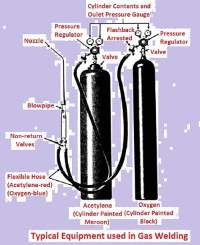

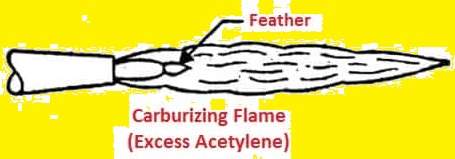
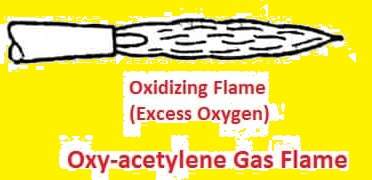
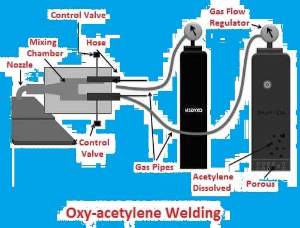
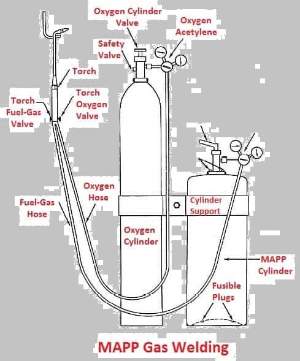

Post a Comment
Please do not enter any spam link in the comment box.